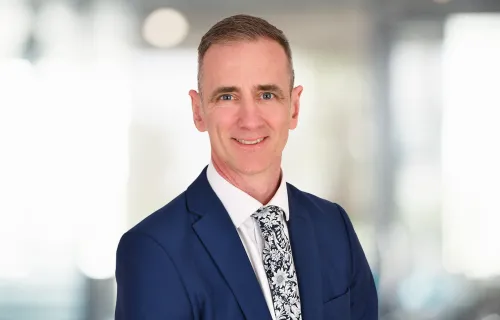As a lead solution architect at CGI, Sian van Es has been involved in countless exciting organisational transformations. She’s also been able to broaden her skill set to areas she never expected. In this article she shares a little of her career story and “wonderful” experience with CGI over the past decade.
December 2022
Having started my career in consumer banking and commercial insurance, I experienced many cumbersome systems as a user. This experience inspired me to get involved in designing better, more responsive and usable applications that are efficient, effective, robust and reliable.
After retraining in business information systems, I took on my first role as a business analyst. I looked at information coherence, meeting requirements and maintaining integrity with current systems. I found that I drew heavily on my insurance experience when looking at risks and ways to mitigate and manage them, extending this to technical debt.
Most of all, I really enjoyed being part of an industry based on systems engineering principles where operational and strategic capability was delivered through collaboration between business and technology.
In 2012 I joined CGI. I’d been working in Defence since 2004, so my new role as Lead Defence Solution Architect was a perfect fit. I developed integrated solution architectures, drawing concepts by eliciting requirements through stakeholder engagement in order to shape solutions.
Playing a key role in exciting client transformations
I’ve helped to transform numerous interesting companies in my years at CGI, with each project a deep learning experience and another step in my development. Early on I was given an opportunity to leverage my architecture background and multi-sector experience in a utility organisation to establish an enterprise architecture in a nuclear power organisation.
In my current public sector safeguarding role, I've used portfolio analysis and enterprise architecture to identify pathways to create roadmaps. This enables our clients to manage risk and technical debt while safely evolving their application capability and migrating data centres.
But the project I’m most proud of to date is a large transition program I worked on. I captured the enterprise architecture and performed an application portfolio analysis of the legacy estate, then developed an ArchiMate model to visualise complex dependencies. With CGI's application portfolio analysis method I identified technical debt and the end of life of the applications illustrating application complexity in terms of interdependencies.
This provided a basis to identify strategies to target high value, high complexity and high risk solutions for bringing these under control. At the same time, it maximised cost savings and reduced risk.
A journey of learning with CGI
Rather than rigid structures, self-organising communities within CGI provide a dynamic resource for accessing advice, tools and training. Also, the company very much believes in investing in its people and building their expertise.
We have opportunities to do role rotation and engage in activities that expand our horizons through mentoring, proposal writing, cross-industry collaboration and innovation. As an architect, I’ve picked up many new skills I wouldn’t have ordinarily learned in this type of role. I’ve been able to apply patterns and frameworks in different contexts, which is incredible for broadening your abilities.
We’re also encouraged to take professional courses and share knowledge as much as possible. I began by studying with RCDA, CGI's architecture Open Group-recognised digital architecture method for transformation and solutions. Then, to specialise in enterprise architecture, I took courses through CGI Academia for TOGAF, got my ArchiMate certification, became an APMG Agile Project Manager and took a number of SAFe and Cloud courses.
Additionally I’ve participated in an Automation bootcamp, which looked at the methods and technologies used to automate business processes and operations, and been supported in setting up an architecture forum. Here colleagues can share experiences, showcase projects and learn lessons in the field from experts.
An interesting insight
One thing I’ve realised over the years working in this field is that while technology changes at pace, people are mostly consistent with the way they behave around it. They need to be engaged and brought on the evolutionary journey to be at the centre of the change. I've come across instances where the users have been presented with a new system without engagement, communication or training, and it tends to end up an unmitigated operational disaster.
That’s why our principle at CGI is to transform with the people, not to the people. We always draw in the users and stakeholders to find out what they want and need as we design the change for their business. Such collaboration and transparency builds trust and leads to far more successful outcomes for the business undergoing the transformation.
If you’re interested in joining us, explore the latest career opportunities at CGI





